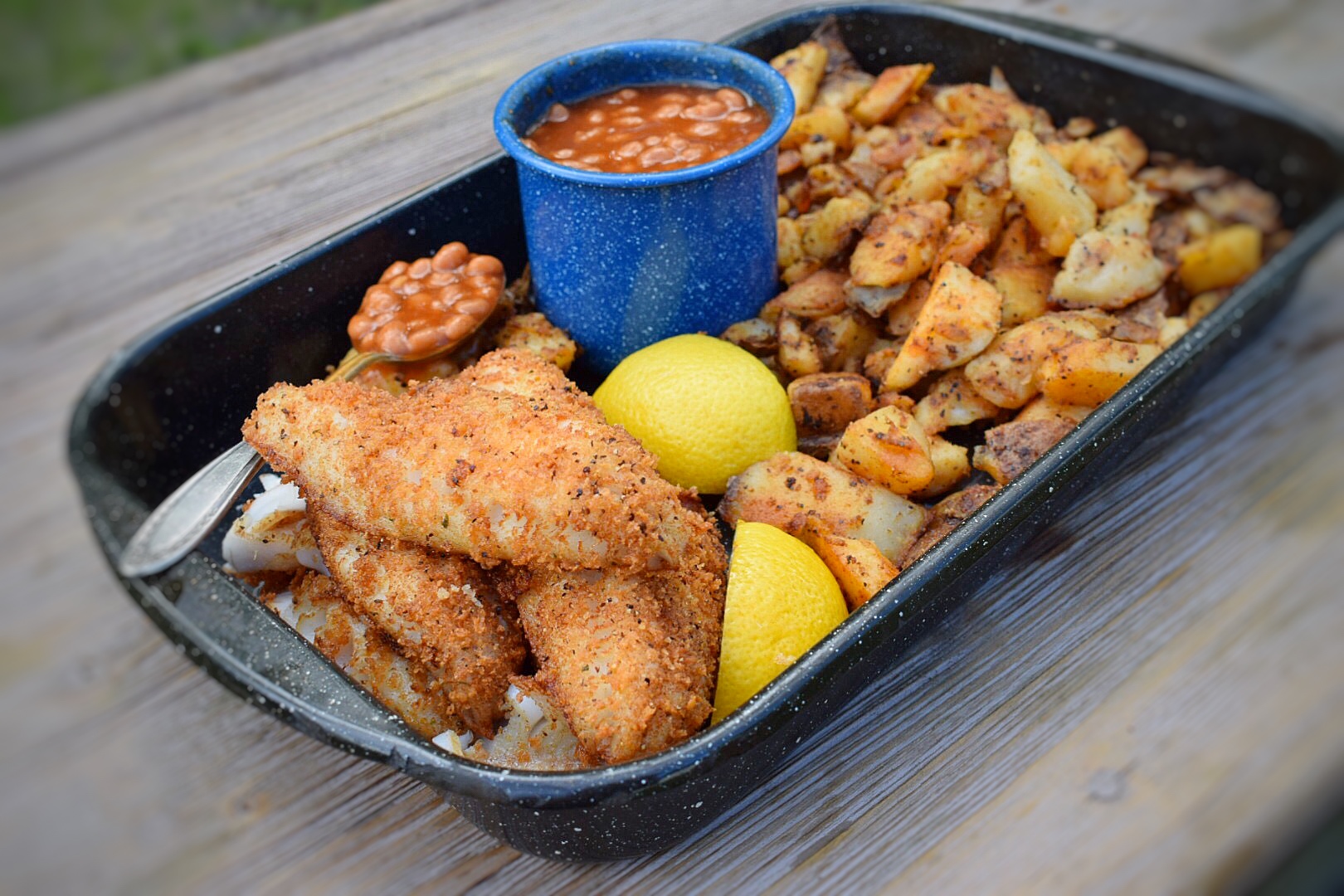The Wonderful Tradition of Walleye on the Prairies
This buttery, firm, white-fleshed lake fish has been at the top of menus for diners across central Canada and the northern United States for a century, yet it remains discreetly under the radar elsewhere. At Ayden Kitchen and Bar in Saskatoon, walleye plucked from nearby Lac La Ronge is served with rutabaga, fired potato, cabbage and raisin jam, smoked paprika oil, and gremolata for a decidedly upscale plate. Meanwhile at the Little Missouri Saloon and Dining in Medora, North Dakota, there’s an all-you-can-eat walleye fry every Friday to cap off a solid week.
This freshwater species is harvested commercially, with the bulk exported to restaurant chains, supermarket chains, and distributors in dozens of countries. In places like Gimli, Manitoba, on the shore of vast Lake Winnipeg, the tradition of commercial fishing dates back to 1875 when Icelanders selected the destination as their new home. Descendants of original families including the Olsons, Kristjanssons, and Mathesons continue to ply the water in summer, fall, and even in winter when four feet of ice locks the lake.
This fish is the sweetheart of the recreational angling set on both sides of the border. It’s the state fish of Minnesota, Vermont, and South Dakota; and the official fish of Manitoba and Saskatchewan. In fact, Minnesotans eat more walleye per capita than any other American jurisdiction. But a funny thing happens on the north side of the border, particularly in the Prairie provinces. While walleye consumption is robust, you’ll seldom see it called walleye on the menu. Instead, it’s called pickerel, causing no end of debate and confusion because true pickerels are members of a different genetic family. But we’ll let the fisheries’ biologists sort it out while we continue to enjoy our pickerel burgers, pickerel cheeks (a delicacy and exactly as it sounds), and pickerel dinners.

Shore Lunch
For outdoor enthusiast and armchair anglers alike, there is perhaps no better way to enjoy Sander vitreus than as the star of a quintessential Canadian outdoor meal—shore lunch. Freshly caught fish deep fried, canned beans, and any manner of hot potatoes make up the mandatory trilogy on the plate. From there, it’s a free-for-all that might include onion rings, mushrooms, peppers, or homemade bread. And chocolate chip cookies for dessert.
Get that fire going first. You’ll want it to burn down a bit before you start cooking. Or set up your deep fryer. A simple, two-step process ensures that you get the best out of this delicious fish. Dip your fillets (or chunks if you prefer) into water or milk to moisten. Dredge in the coating of your choice. Equal parts cornmeal and flour deliver a nice crisp exterior. Many commercial coatings are available offering flavour profiles than run from Cajun to Asian. Without question, the most critical part of your shore-lunch creation is the temperature of the oil. Use canola oil and keep it at 375°F. Invest in a thermometer. Gently slide the coated fish into the oil and fry for four minutes, turning once.
Now stretch out on that warm granite outcropping, give your plate a squeeze of fresh lemon, and enjoy that walleye—or pickerel.
Classic Shore Lunch
4 walleye fillets
½ cup (175 ml) milk or water
½ cup (175 ml) flour
½ cup (175 ml) cornmeal
2 tbsp (30 ml) lemon pepper seasoning
1 quart (1 litre) canola oil
In your deep fryer or deep pan, preheat canola oil to 375°F. Combine flour, cornmeal, and lemon pepper in a shallow plate. Dip fillets in milk or water, then in breading. Shake off excess. Slide into pan and deep fry for four minutes, turning once halfway through. Drain on paper towel. Serve with tartar sauce and lemon wedges.
________
Never miss a story. Sign up for NUVO’s weekly newsletter here.




